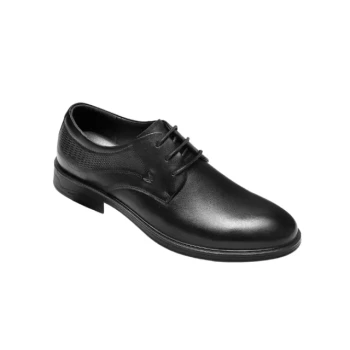For dry wood floors, the most recommended sole materials are neoprene, leather, and soft rubber. These materials are chosen for their ability to provide reliable grip without damaging the floor's sensitive finish.
The best sole material is not just about the floor type, but about balancing grip, floor preservation, and performance under specific conditions. While several materials work on dry wood, understanding their individual trade-offs is key to making the right choice.
Why Sole Material Matters on Wood Floors
Choosing the right footwear for wood floors is about more than just comfort. The interaction between the sole and the floor surface dictates safety and the longevity of your flooring.
Maximizing Grip and Stability
A primary concern on smooth surfaces like wood is preventing slips. Materials like soft rubber and neoprene excel here because their pliable nature allows them to create a larger contact patch with the floor, maximizing friction.
Preserving Your Floor's Finish
Wood floors can be easily scuffed or scratched. Leather is a classic choice for indoor use because it is smooth and typically non-marking. Softer rubber and neoprene compounds are also generally safe for wood finishes.
The Impact of Environmental Conditions
The performance of a sole material can change dramatically with environmental factors. The recommendations for dry wood floors are specific because the introduction of moisture can alter the grip characteristics of certain materials.
Understanding the Trade-offs of Each Material
While neoprene, soft rubber, and leather are all suitable for dry wood floors, they are not interchangeable. Each has distinct strengths and weaknesses revealed when comparing their performance across different environments.
Neoprene: The All-Rounder
Neoprene is recommended for nearly every flooring type mentioned, both wet and dry. This makes it an exceptionally versatile and reliable choice if your footwear will be used in varied conditions. Its performance remains consistent.
Soft Rubber: The Dry Surface Specialist
Soft rubber offers excellent grip on dry surfaces like wood, tile, and concrete. However, its exclusion from the "wet tile" recommendation is critical—it implies that its grip degrades significantly when the surface is wet, making it a specialized material for dry conditions only.
Leather: The Classic Indoor Choice
Leather is recommended for all smooth indoor floors, wet or dry. Its primary trade-off is durability on abrasive surfaces; it is not recommended for concrete. This positions leather as an ideal material for preserving delicate indoor floors where abrasion is not a concern.
How to Make the Right Choice
Your specific goal should guide your decision. Consider what you value most in your footwear's performance on wood floors.
- If your primary focus is versatile safety: Choose neoprene for its consistent, reliable grip across both wet and dry indoor surfaces.
- If your primary focus is maximum dry grip: Choose soft rubber, as it is specialized for providing excellent traction in exclusively dry environments.
- If your primary focus is floor preservation: Choose leather for its non-marking properties, which are ideal for protecting delicate wood finishes.
Ultimately, selecting the correct sole material empowers you to move with confidence while protecting your environment.
Summary Table:
| Material | Best For | Key Consideration |
|---|---|---|
| Neoprene | Versatile safety on wet & dry surfaces | Consistent, all-round performance |
| Soft Rubber | Maximum grip on dry surfaces only | Loses effectiveness when wet |
| Leather | Superior floor preservation indoors | Not suitable for abrasive outdoor surfaces |
Need the right sole for your specific environment?
As a large-scale manufacturer, 3515 produces a comprehensive range of footwear with precisely engineered soles for distributors, brand owners, and bulk clients. Whether you need the versatile safety of neoprene, the specialized dry grip of soft rubber, or the floor-preserving qualities of leather, we have the production capabilities to meet your needs.
Contact our experts today to discuss your sole material requirements and get a custom solution.
Related Products
- Custom Manufactured Air Cushion Leather Business Shoes for Wholesale
- Wholesale Comfortable Business Casual Shoes Custom Manufacturing
- Wholesale Leather Derby Shoes Manufacturer | Customizable Business & Dress Footwear
- Classic Leather Derby Dress Shoes Wholesale & Custom Manufacturing
- Wholesale Comfort Leather Business Shoes with Dial Lacing System
People Also Ask
- Why are sneakers now accepted in office environments? The Shift to Modern Professionalism
- Are sneakers appropriate for business casual settings? A Guide to Modern Office Footwear
- Can trainers/sneakers be worn in a business casual setting? How to Choose the Right Style for a Professional Look
- Are sneakers acceptable in a business casual workplace? How to Choose the Right Style
- What are the benefits of calf leather for dress shoes? Unmatched Elegance & Comfort



















